8 Brilliant Ways to Send Trigger Emails
What’s the most efficient way to customize your emails? The answer lies in the process of email automation. Automated emails will help you deliver personalized messages to the right person at the right time. Using automatic emails to enjoy the benefits of personalization can sound like a paradox. These emails are sent when activated by a real event on your website, and therefore they have another common name, “triggered emails.” The relevance of this type of emails gives the feeling of a personal touch. In this article, I will introduce you to you eight amazing ways to send triggered emails and many tips on how to send them effectively. Now let’s jump right into the details.
What is a triggered email?
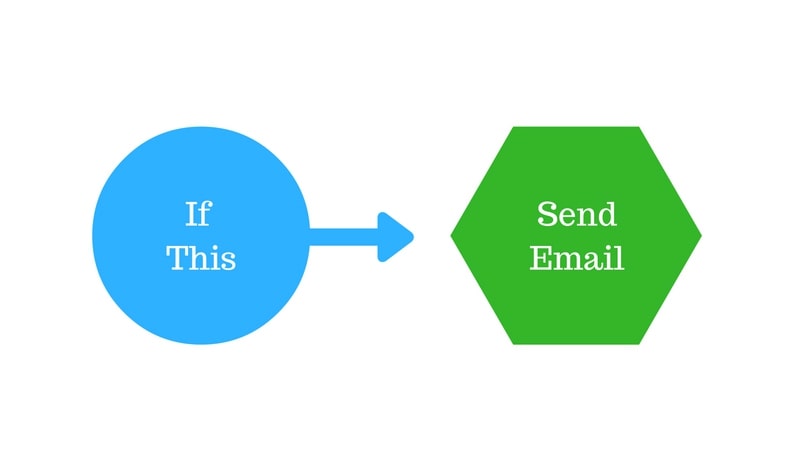
As an email marketer, you already know that there are many types of emails that can help you build a relationship with your customers. Although some are one-off emails, like newsletters, others are in the form of a series. These series are also sent automatically after a customer or a subscriber has completed a particular action. The activation is known as the “trigger” and the email sent is identified as “triggered email.”
Triggered emails vary from normal promotional emails in that they are automatically sent to an individual customer based on their specific behavior. In contrast, promotional emails are sent to a group of people regardless of their behavior.
Why are triggered emails important?

Triggered emails are a powerful marketing tool because they can create relevance in the emails sent to the customer, and automating your emails can save you time. According to the Direct Marketing Association’s research, triggered emails generate four times more revenue and 18 times more profits for businesses than regular emails. These are the key benefits offered by emails to companies and their target audiences:
Regular communication
Using triggered emails makes it easy to keep your customers updated, building confidence and improving your business reputation. By interacting with customers about orders, new products, cart abandonment and more, you are developing a long-term relationship that brings in return customers.
Customers’ expectations
For many consumers, triggered emails have become an expectation, which means that if they place an order, book a room or subscribe to a newsletter, they expect to receive a confirmation email. These automated emails will save you time and create trust with your customers.
High open and click-through rates
A significant advantage of triggered emails is that they have a 71 percent higher open rate and a 102 percent higher click-through rate than non-triggered emails, which means recipients are highly likely to read and interact with your emails. This is because emails are sent based on the actions of the individual person, so any email they get is important and relevant to them.
High conversion rates
Triggered emails can help you increase conversion rates and revenue by:
- Reducing cart abandonment
- Providing a step-by-step call to action
- Offering immediate engagement
- Generating more leads than non-triggered emails
- Sending personalized messages throughout the customer journey
- Responding more quickly to leads
- Delivering messages to a more targeted audience than non-triggered emails
- Cross-promoting related products or brands
Relevance
The key explanation that so many emails are not opened is that they are not important or relevant to the recipient. Triggered emails solve this problem by only going to recipients who have taken specific action to let email marketing software know they’re interested in receiving specific emails.
Segments and schedules
Creating trigger-based emails with email marketing software is fast and simple. All you need to do is identify the trigger and set up the email, and the email will automatically be sent to the appropriate users without any further work on your part.
AVADA email marketing is a great tool that you can use to create various types of triggered emails which will be discussed in the following section. It enables you to set up triggers with many pre-made or custom-made email templates with simple drag-and-drop features. You don’t need to know a single line of codes to use this app, and it’s also free. You can download it on the Shopify app store at this link.
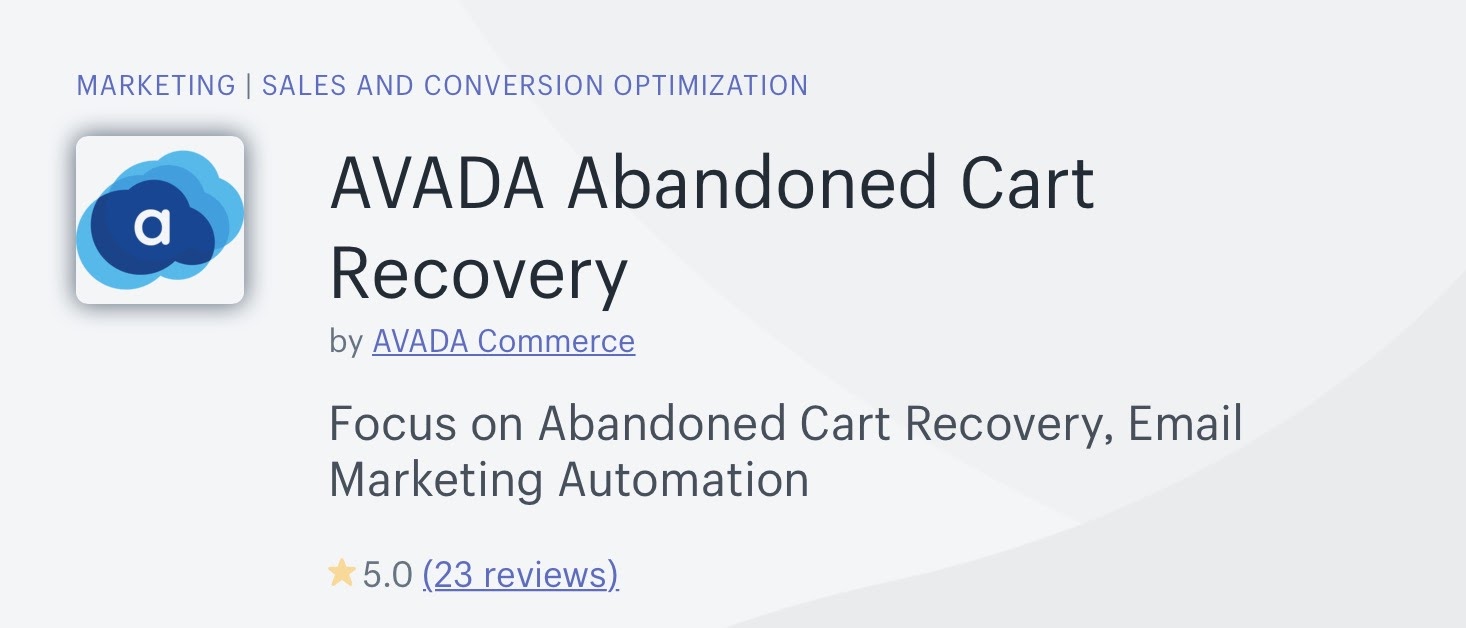
Customer retention
Triggered emails help you maintain your current customers by keeping on the communication, sending customized emails and responding promptly to customer behavior. All of these items help to make current customers feel connected by your company, promoting brand loyalty.
8 effective ways to send triggered email
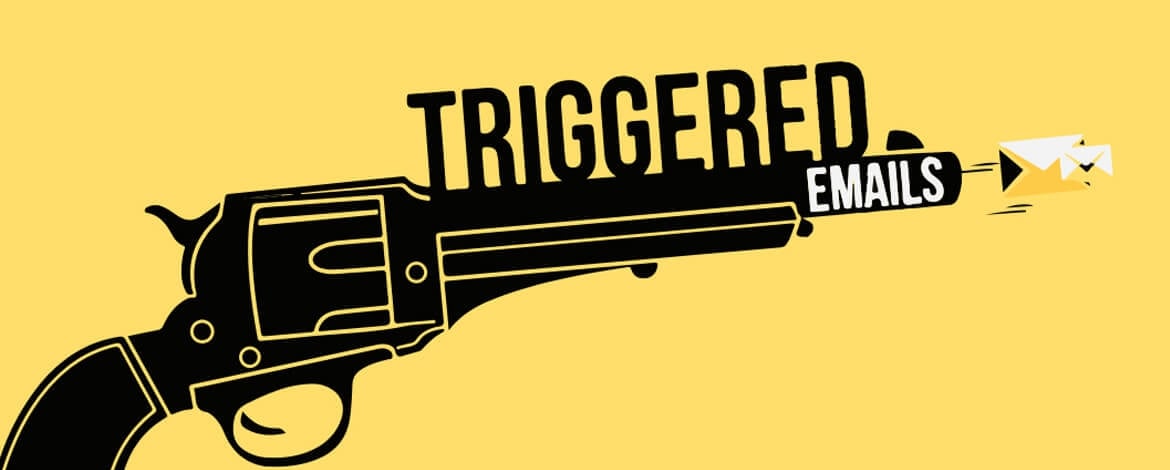
There are many types of triggered emails that you can take advantage of. Let’s take a look at each of them.
1. Welcome emails
Automated email campaigns have nearly 70 % higher open rates than traditional emails. When that email is an automated welcome message to new subscribers, the open rates can be even higher. Welcome emails are opened 10 times more frequently than any other emails, so if you don’t take the time to welcome your new email subscribers properly, you’ll miss out on some big opportunities to create an impression.
Welcome emails are e-mails that are sent automatically after the new subscriber has completed the opt-in phase. Usually, these messages make the reader feel welcomed, while also giving them the following steps, such as:
- Introduction of your brand/head of the company
- What they can expect from your brand
- CTAs that lead to other content worth discovering
Now, the goal is not to overwhelm the new subscribers, so welcome promotions are often divided into short series that break down into different sections. These series are further automated on the basis of various variables, including fixed time intervals and subscriber actions.
Read more: 11 Welcome Email Templates That Always Win
2. Onboarding emails
Although welcome emails and on-board emails are often bundled together in an automatic welcome sequence, they are two very different emails. What makes an onboard email distinct from a welcome email is that these emails are meant to get the new subscribers started in the buying process.
For example , as part of the HelloFresh welcome series, new subscribers are invited to the company and later receive emails that inspire them to check out their food services. An onboard email could have been activated in the example below after the subscriber has checked a few menu options available to members. So now the brand wants to show the subscriber how simple it can be to get started.
In certain instances, these onboard emails provide some kind of rewards to get subscribers to take action. In this particular example, the incentive is a $20 off each of your first three deliveries. This is a great way to encourage your new subscribers to use your product/service.
In certain instances, these onboard emails provide some kind of reward to get subscribers to act. The reward is a one-off $20 off each of your first three deliveries in this particular case. This is a great way to encourage your new subscribers to jump on it.
3. Transactional emails
Transactional emails come in a number of ways. However, the most common transactional email is that customers receive after making a purchase. When anyone orders from your eCommerce shop, a digital receipt will be sent to their e-mail address in the register, or one that they will get at checkout.
Again, although the purchase triggers the most common transactional email, these emails may be activated for a variety of different reasons. By definition, transactional email has been sent to confirm that a transaction has taken place. This could be a transaction or any of the following:
- Password reset notification
- Registration confirmation
- Cart abandonment email
- Feedback request
- Even confirmation email and more
Once all of these transactions have been completed, an automatic email confirming the event should be sent to the recipient to verify what has occurred and when. Even better, those who use automatic transactional emails in their marketing plan see 8 times as many opens and clicks as any other form of email, as well as producing 6 times more revenue.
While the example above is a typical post-purchase transactional email, this example of the Waking Up brand is a transactional confirmation email. This form of transaction email may be activated in a variety of ways. For instance, someone is new to the Waking Up brand and they’re just setting up their user profile.
This email can be triggered automatically as part of the initial setup process to ensure that the customer who’s signing up for the app is who they claim they are. Another reason may be that the user has forgotten their login password for the app. When they clicked the “Forgot Password” button, they should have activated this email to verify that they are who they are, so that they can continuewith the reset process.
Read more: 7 Must-have Transactional Email Templates
4. Re-engagement emails
Re-engagement emails are emails that can be triggered when anyone in your mailing list reaches your brand’s specific definition of “inactive.” For example, if a subscriber has not been interacting with you for six months, a re-engagement mail is automatically sent to them to try to get them back. Some subscribers just become inactive; however, before you write them off as a lost cause, you should try to keep them first.
5. Product inventory updates
For those with an e-commerce store, product inventory emails are excellent triggered emails that should be sent to the customer. If you have been carefully monitoring user activity using website cookies or email pixel tracking, you can send automatic messages activated by certain customer behaviors.
In this case, the beauty brand Sephora probably monitored the actions of their customers and found that they paid special attention to this sold-out product. That said, once the product was available again, an automatic trigger email was sent to everyone who paid special attention to this one product. Those who did not show any interest or visit this product page will not receive this product update because their user data was not collected.
6. Event announcements
Event updates are another excellent opportunity to send automated promotions. Although some people automatically send these updates to everyone on their email list, it’s a better idea to give consumers control over how they want to receive these. This allows subscribers to select which of the segmented lists they want to be part of. If they want to receive updates about upcoming activities, the trigger will be set later. When an event announcement is made available, it is sent to those on the list automatically.
7. Survey/feedback emails
Finally, one more campaign that is worth introducing to your automated email campaigns is customer feedback/survey email. These emails are perfect because they can be activated by almost any form of case, including:
- Purchase
- Following an event
- After downloading free content and more
- After attending a webinar
Not only do these emails help you to gain valuable input from your customers, but they also allow the voices of your customers to be heard — something they expect from any company.
8. Personal events
These emails are triggered by an event in the customer’s personal life, such as their birthday, an anniversary or a shopping milestone. Sometimes, these messages contain a gift of some kind, often a discount code or other promotional product.
Send triggered emails in minutes with AVADA Email Marketing Free
Learn moreHow to create triggered emails

Creating triggered emails is simple; most marketers use email marketing tools to do so. The specific steps will vary based on which email marketing service you use, but you should follow these general steps to build your own emails:
1. Create the automation flow.
First off, you need to define an email trigger (e.g., an abandoned cart, a subscription or a purchase). You can also specify, out of all the emails in your arsenal, which one the message will be sent from.
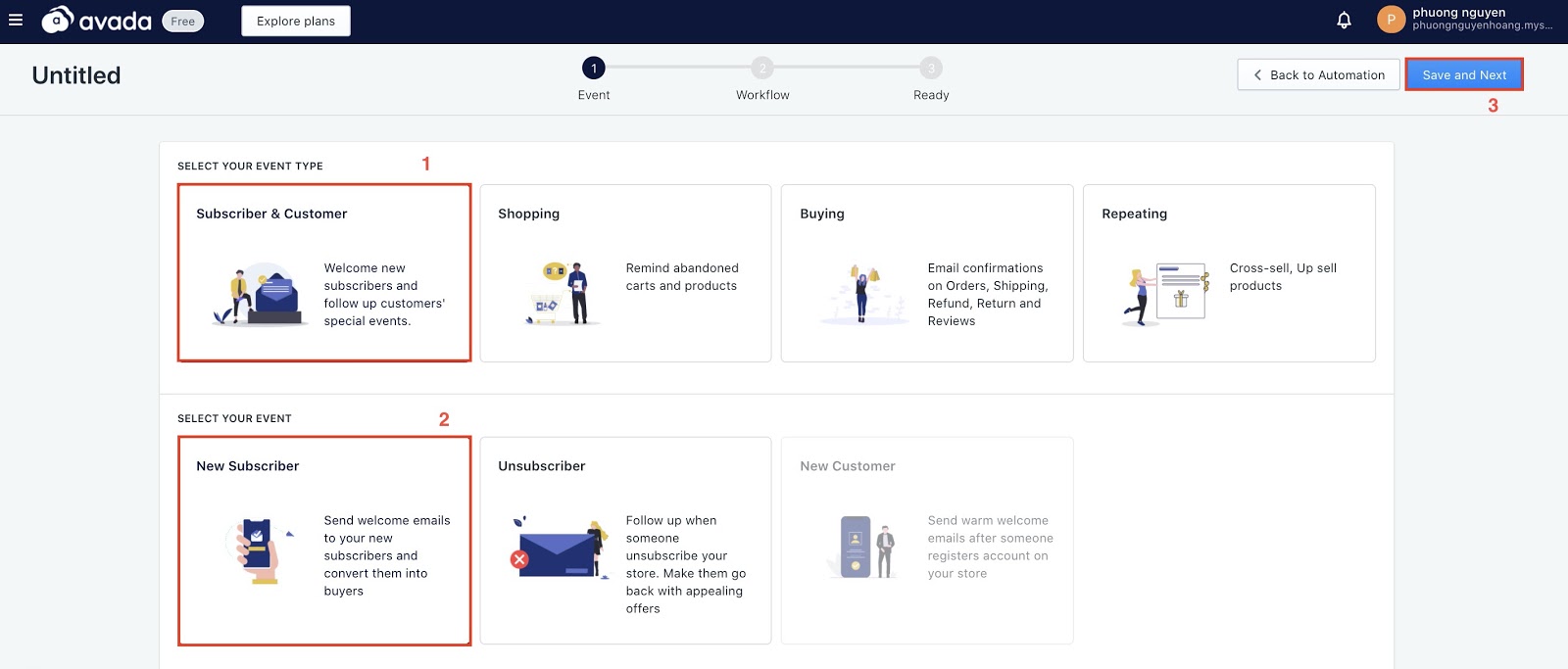
2. Create the email.
Next, create an email that will be sent after the trigger. Give it a good subject line, a straightforward copy and a call to action that directs the customer to the next move. The email should make it clear to the recipient why it was sent; you want the customer to know that this email has been sent specifically for them.
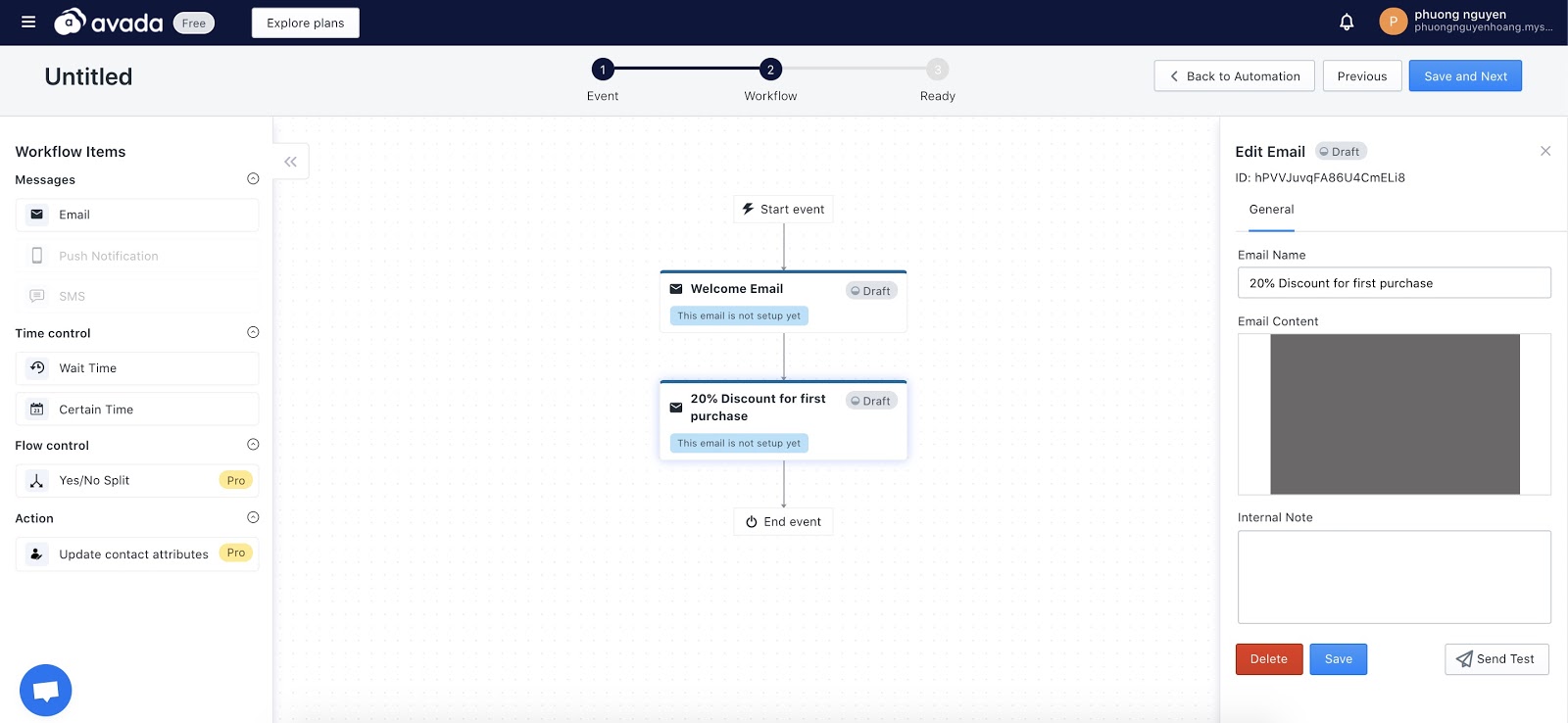
3. Segment your recipients.
To target your audience more effectively, you can segment your recipients by different factors, including age, gender, location and behaviour. Segmentation allows you to send emails to the right recipients more easily, which can maximize your return on investment.
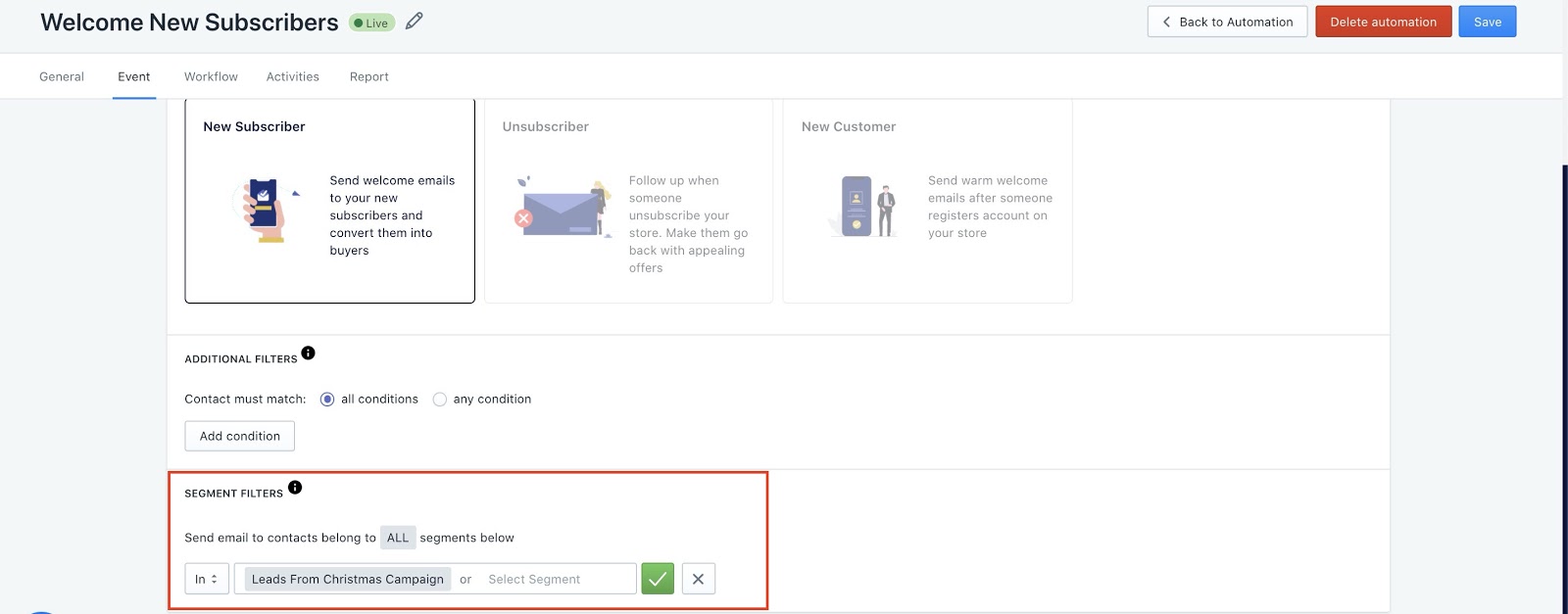
4. Save the trigger.
The final move is to save your automated email and let it work! You should send a test campaign to make sure the message is functioning correctly before you send it to your customers.

Best practices for triggered emails

There’re many ways to make sure your triggered emails are effective and help you achieve your goals. Here are tips on how to build effective triggered emails.
Provide valuable content.
The best way to ensure that the customer well receives your triggered email is to ensure that it carries relevant content that the customer considers useful. Please do not send an email for the sake of sending an email.
“Always make sure that you include important and interesting content in your triggered emails that would drive the recipient to take more action in your sales funnel,” said Allan Borch, founder of Dotcom Dollar.
Solve a problem or answer a question.
Your audience will be more likely to connect with your emails if you help them solve an issue or clear up their questions.
“You should answer the pain point of the customer in your e-mails,” said Michael Kipness, founder of Wizard Race and Sports. “If it is a cart forfeiture, please submit a reminder that addresses the pain point that a particular product can solve. Don’t over-promote the product, but you may emphasize some of the features of the product and add a link to the checkout page.”
Use customer data thoughtfully.
When you build a triggered email campaign, you can use your audience data to decide which emails should be sent to which customers. The data will help you tailor and personalize your emails to each customer. When looking at the data, consider the following questions:
- How did the customer sign up to receive emails from you? What does it mean about their own interests?
- What items do they see most on your website?
- Are they engaging with your content on various channels ( e.g. your website and social media)?
- Have you ever bought any other items from you?
Segment your customer list.
Segmentation can be an extremely powerful technique that allows you to develop highly targeted and customized trigger strategies that fit each customer’s actions and desires. There are several common factors that advertisers use to subscriber list segments:
- Location
- Age
- Gender
- User behavior
- Family status
- Work status
Reassure and communicate with the customer.
Your emails will verify your business transactions with consumers and reassure them that they have given their financial details to a legitimate business with safe policies in place.
“Clients will feel insecure immediately after submitting their financial information,” said Kevin van Dijk, CEO and founder of Tree Online. “The -mail being activated at this time helps to reassure the customer. This vital contact point often establishes a bond of trust between the brand and its customer base.”
Set a goal for each trigger campaign.
Setting a target for every trigger campaign – such as birthday or cart abandonment emails – helps keep your content focused and clear. You’re trying to stop sending so many emails that don’t have a good purpose. Think of what you want the customer to do after you receive an email. Would you like them to make a purchase? Visit some of the websites? Sign up for an event? Whatever the goal is, design your triggered email campaign around it, and include a CTA to make the action you want crystal clear.
Schedule your campaigns carefully.
With 45 percent of users unsubscribing from email lists as a result of getting too many emails, it is important that you carefully schedule your triggered emails to make sure that you do not overwhelm your customers. Only try sending emails once or twice a month. A consistent schedule can also let your customers know what to expect from you.
Final Words
That’s it! I hope this article has given you valuable information about how you can set up and execute triggered emails for your business. Don’t forget to get AVADA marketing email from the Shopify app store to assist you with your triggered email strategies, and please feel free to leave comments below for further discussion on this topic.
New Posts






